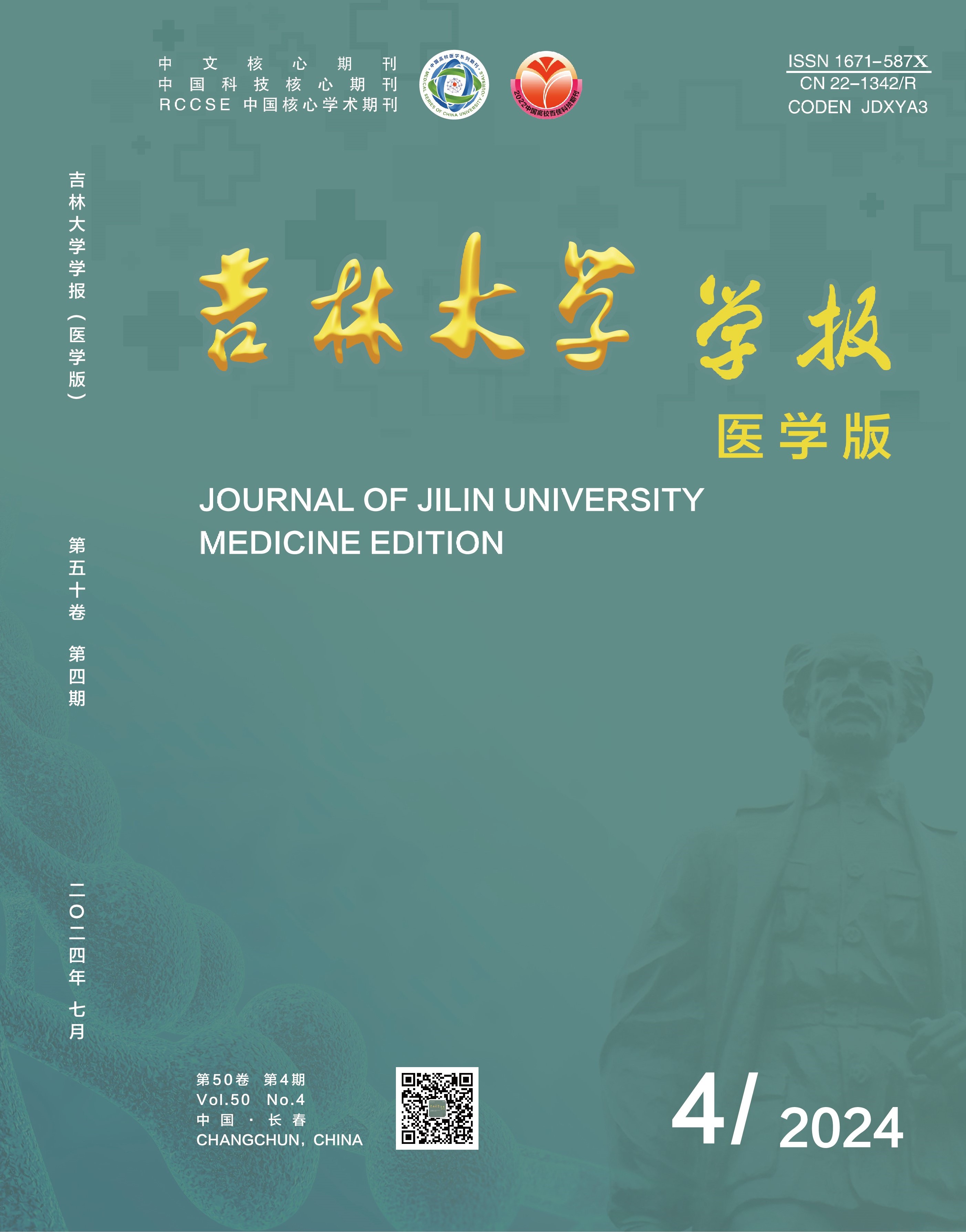|
|
Liver injury induced by hydrodynamic injection and natural repair of liver in mice
LI Shengnan, ZHANG Haiying, SUN Qianhui, LI Yanru, GE He, DU Yu, WANG Lin
Journal of Jilin University Medicine Edition. 2018, 44 (02):
275-280.
DOI: 10.13481/j.1671-587x.20180213
Objective:To observe the morphological features of liver injury induced by hydrodynamic injection,and to explore the procedure and mechanism of liver repair. Methods: Twenty-five female Balb/c mice were intravenously injected with large volume of saline solution (1.8-2.0 mL) in 3 s. The mice were divided into 30 min,8 h,1 d,3 d,and 7 d groups according to the post-injection time. Each group contained 5 mice. Six non-injected mice were used as control group. The blood samples from angular vein of the mice were collected to detect the levels of alanine transaminase (ALT).The morphological features of liver tissue of the mice in various groups were observed with HE staining.The proliferating cell nuclear antigen (PCNA) protein expressions in liver tissue of the mice in various groups were detected by immunohistochemical saining.The expression levels of tumor necrosis factor-α (TNF-α),interleukin-6 (IL-6),epidermal growth factor (EGF),hepatocyte growth factor (HGF),transforming growth factor-α (TGF-α),Cyclin D1,vascular endothelial growth factor (VEGF),Bax and Bcl-2 mRNA were determined by Real-time PCR. Results: Compared with control group,the ratio of liver weight/original body weight in 8 h group was significantly decreased (P<0.05),but there was no significant difference in 7 d group (P>0.05).Compared with control group,the serum ALT level in 1 d group was significantly elevated (P<0.01),but there was no significant difference in 7 d group (P>0.05).Compared with control group,the liver tissue of the mice in 30 min group showed hepatocyte swollen and small hemorrhagic area,and the number of hepatocytes per high power field was significantly declined (q=4.760,P<0.05) under microscope. Compared with 30 min group,the number of swollen cells was decreased in 8 h group,the hemorrhagic and necrotic area enlarged,both of the hepatocyte number and binuclear hepatocyte number per high power field were significantly increased (q=7.310,P<0.01;q=7.200,P<0.01).Compared with 8 h group,the hemorrhagic and necrotic areas in 1 d group were reduced,both of the hepatocyte number and binuclear hepatocyte number per high power field were significantly decreased (q=4.966,P<0.05;q=6.596,P<0.01); there were no significant differences compared with control group (P>0.05).The hemorrhagic and necrotic areas almost disappeared in 3 d group.The histological appearance of liver tissue of the mice in 7 d group was same as control group.Compared with control group,the PCNA indexes in hepatocytes in 8 h and 1 d groups were significantly increased (t=4.458,P<0.01; t=15.557,P<0.01); there was no significant difference in 7 d group (P>0.05).Compared with control group,the PCNA index in cholangiocytes in 30 min group was increased significantly (t=3.985,P<0.01); there was no significant difference in 7 d group (P>0.05).The mRNA expression levels of TNF-α,IL-6,EGF,and VEGF in liver tissue of the mice in 30 min group were significantly higher than those in 8 h group (q=4.952,P<0.05; q=14.750,P<0.01; q=14.750,P<0.01; q=13.551,P<0.01).The HGF mRNA expression level in liver tissue of the mice in 3 d group was significantly higher than those in 30 min group and 8 h group (q=5.031,P<0.05;q=4.631,P<0.05). The TGF-α mRNA expression levels in liver tissue of the mice in 8 h group and 1 d group were higher than that in 30 min group (q=4.592,P<0.05; q=8.137,P<0.01).The Cyclin D1 mRNA expression levels in liver tissue of the mice in 8 h group and 1 d group were higher than that in 7 d group (q=4.736,q=5.213,P<0.05). The Bax/Bcl-2 ratio of the mice in 1 d group was higher than that in 30 min group (q=5.731,P<0.01). Conclusion: Acute liver injury induced by hydrodynamic injection mainly shows the hepatocyte swelling and hemorrhagic necrosis.The injury could be repaired naturally in a week.The various cytokines and growth factors related with liver regeneration are involved in the repair procedure.
References |
Related Articles |
Metrics
|

 Table of Content
Table of Content
 Guide to Authors
Guide to Authors


